by Gwenaël Kerlidou
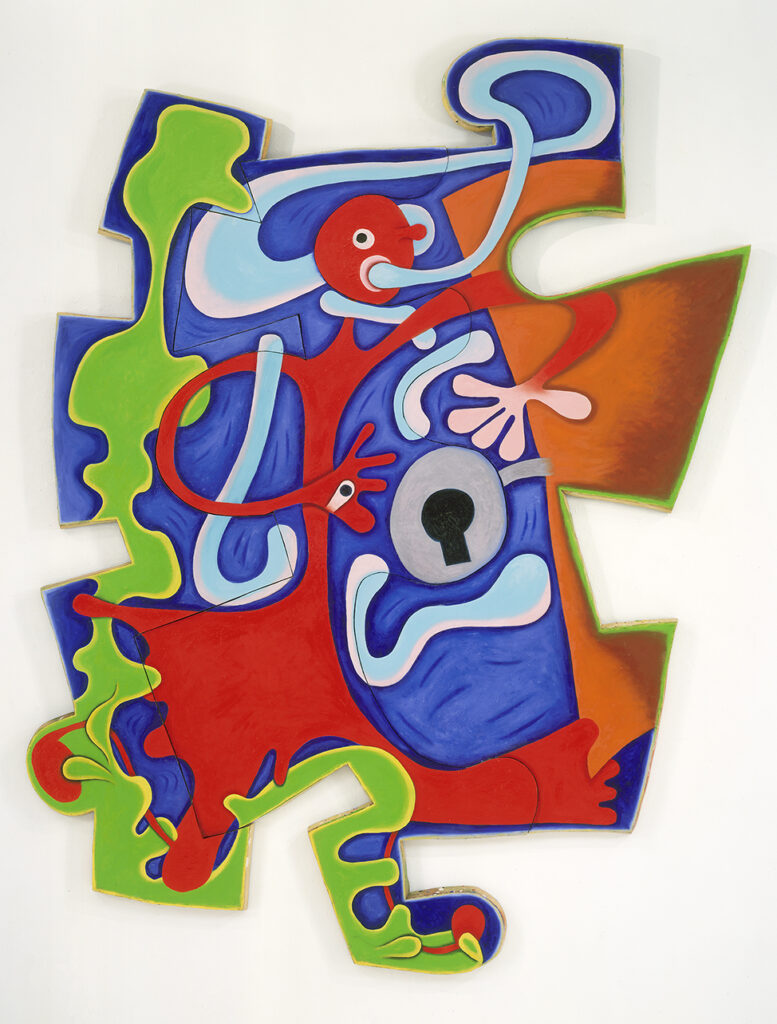
Thirteen years after her passing, a survey of her work in Buffalo, New York, is shedding new light on the formative years Elizabeth Murray (1940-2007) spent teaching at the University of Buffalo, from 1965 to’67. It also offers a timely opportunity to reassess her legacy in the light of the ongoing discussion on the state of painting.
Borrowing from Murray’s 1999 painting “Back in Town,” the exhibition’s title seems to be taking its cues from Everybody Knows, Kristi Zea’s 2016 documentary film on Murray’s work, the title of which was also lifted from a painting, her last in this case. In a happy juxtaposition, both paintings are included in the exhibition, providing useful markers, beyond those of pure historicity, for a non-linear overview of her work.
I have been a big fan of Elizabeth Murray’s work from day one (which, in my case, was her 1981 show at Paula Cooper Gallery), but stepping into this exhibition, I wondered how well her work had held up over the years, especially regarding her use of large formats, which often seemed bigger than necessary.
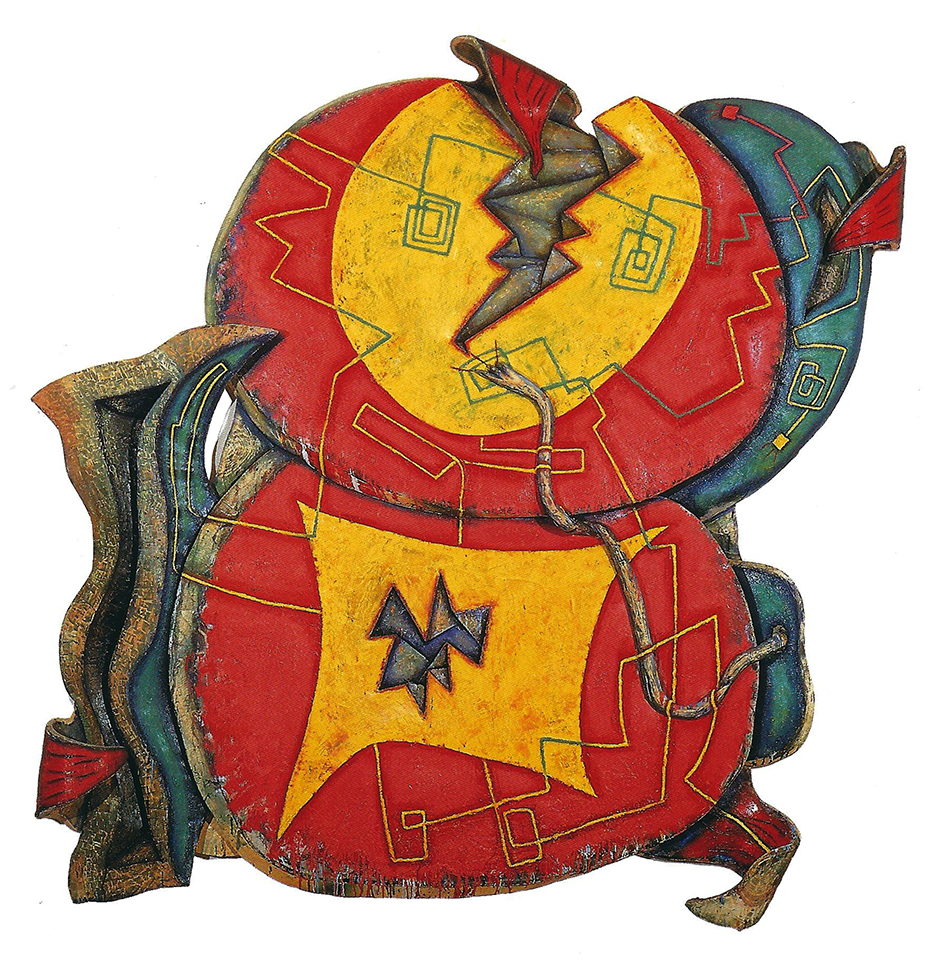
In the fifties and sixties, some women artist were said to overcompensate for their lack of recognition from their male counterparts by overdoing macho bravado. Joan Mitchell’s heavy drinking and horsing around, or Louise Bourgeois’ famous emphatic rudeness, have been explained as personas they developed in order to survive as artists in a male world. The question of whether the “size matters” aspect of Elizabeth Murray’s work was a similar symptom, loomed on that horizon.
In order to impose more phenomenological presence on the viewer, Minimalism made systematic use of the Abstract Expressionism’s existential fondness for large formats. In painting, from Robert Motherwell to Frank Stella, to Julian Schnabel, the result of that trend has been an overproduction of oversized works coming up short as convincing paintings. Not too big to fail, but too big for their own good. Could something else be at play here?
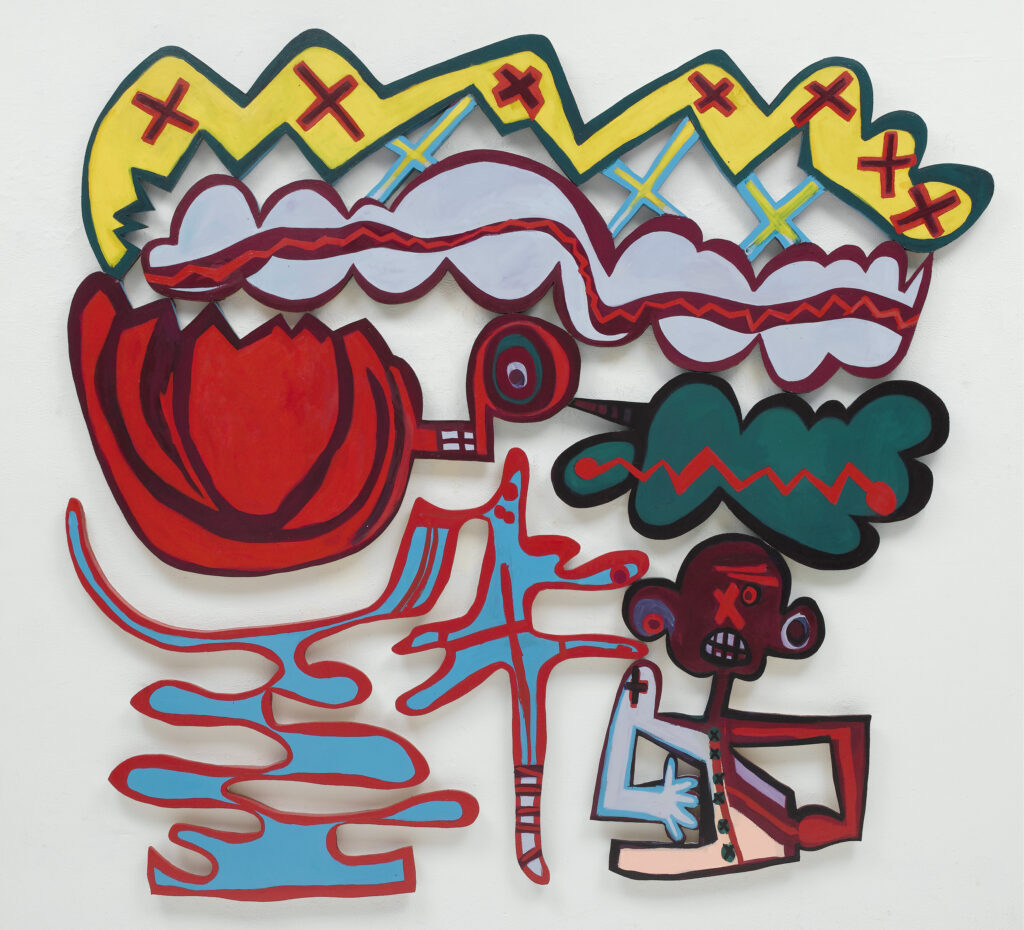
Starting in the early 70s Thom Nozkowski’s commitment to small formats is perhaps the best example of the rejection of the pervading use of large formats in American painting. For Nozkowski, large formats were ideologically tainted with Cultural Imperialism. If in the discussion of size versus scale, scale can prevail in small paintings, in big paintings scale is irrelevant. Big paintings cannot suggest a scale bigger than their size. So, the question became whether the use of big formats by a female painter brought something else to the table, besides an imperialist scale. A question recently underlined in Julie Mehretu’s survey at the Whitney.
A promising young abstract painter through the 1970s, Murray came into her own at the beginning of the 1980s, with a unique combination of image and fragmented support. At that time, the resurgence of the image was easily attributed to the aesthetics of the times (the Whitney Museum organized a major exhibition titled “New Image Painting” in 1978, the Metro Pictures Gallery opened in 1980), but her treatment of the multiple shaped stretchers did not fit into neat categories.
The origins of the transfer of the figure from the painted space to the literal shapes of the support, her major breakthrough of the early ’80s, can be traced back to her 1972 painting “Madame Cézanne in a Rocking Chair.” This was the first iteration of a “primal scene” (so to speak) —repeated in so many subsequent paintings — of a closed interior space diagonally divided by a beam of light coming through a small window or door opening. In that painting, structured like a comic strip with multiple panels, the rocking chair kicks Madame Cézanne out of the painting, in the final panels. The Figure, here symbolically ejected from the space of representation, will reappear a few years later in the guise of the shaped stretcher.
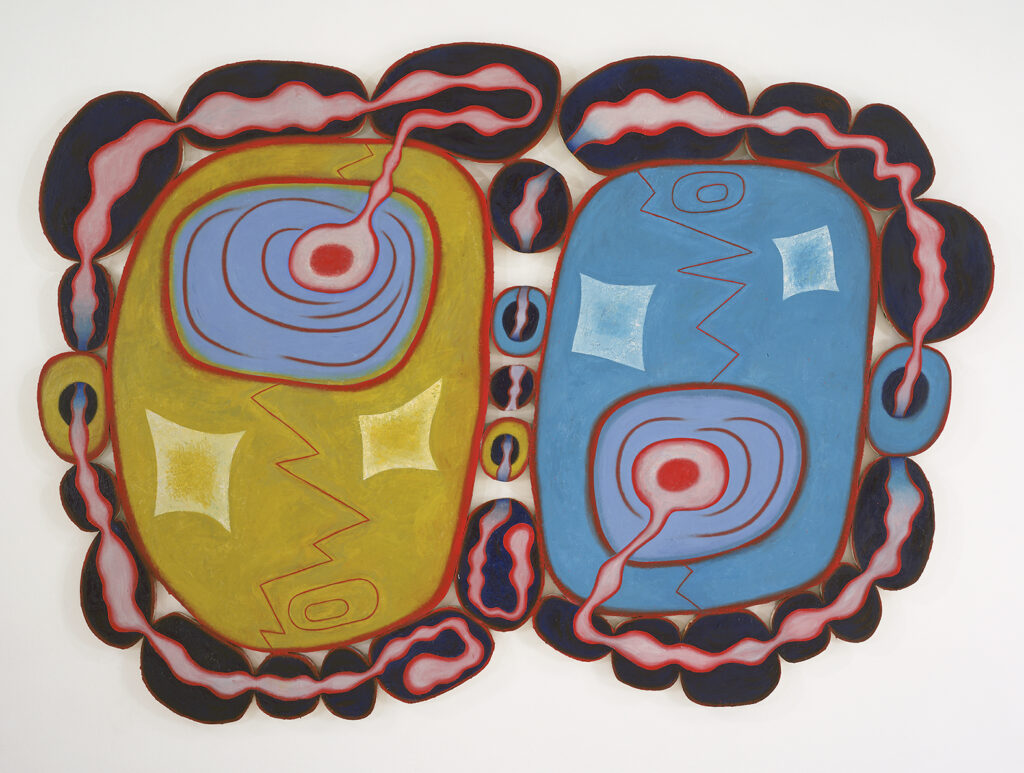
In the meantime, that primal scene of the closed interior, where the human figure has been evacuated, has turned into a zone of accidents. On a table surrounded by chairs, a coffee cup is inadvertently spilled. Painting after painting, this minor incident is magnified to the epic scale of a cataclysmic event, with such cathartic insistence that it’s reasonable to interpret the metaphor as the overturning of the vessel of male Modernism.
Even though it had been lurking in the background forever, when the painted figure returns circa 1983, it is as a goofy cartoon form straight out of the Chicago Imagist, an ectoplasm lost in a maelstrom of shapes and colors, the ghost of a splintered self, a spirit — or a conscience — haunting the shaped body of the painting.
In his introduction to the survey of her work he organized for MoMA in 2005, Robert Storr made a strong case for Murray’s inclusion in the canon. But for all its good intentions, that text — the reflection of a paternalistic institution obsessed with establishing filiation — only produced a linear narrative, ultimately meant to reinforce its own relevance: Cézanne, Van Gogh, Juan Gris, Philip Guston, The Hairy Who, Claes Oldenburg, Frank Stella, Brice Marden, Ron Gorchov, and so on.
Like any ideological discourses, Storr’s essay operated on two levels, attempting, first, to tame the wild beast of a work that did not fit into any of its standards (and as such threatened the status quo) by “explaining” it, and second, to recuperate its subversive potential by giving it a place and status within the pantheon of white male Modernism. The taming is successful when the institutional narrative is so convincing that it appears as the last possible word on someone’s work, shutting off any future alternative readings.
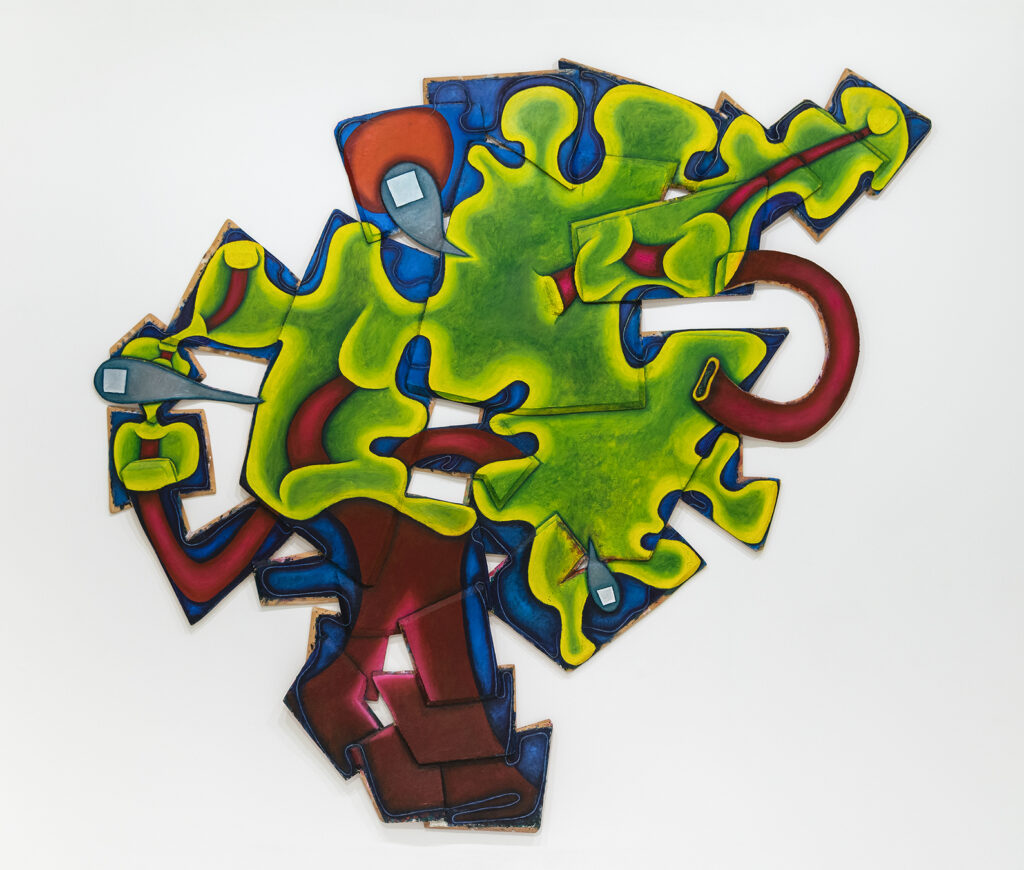
But, in the spirit of Murray’s own approach to painting, let’s think outside the Formalist box of filiation for a minute. Let’s posit the artist as product of a community of kindred spirits, all working in the same cultural context with different responses. For Murray, this community could be, upstream, on the ascendant side: Zilia Sanchez , Jay DeFeo , Lee Lozano , Deborah Remington , Lee Bontecou , Gladys Nilsson ; All working their way out of Abstract Expressionism without veering into Minimalism. And downstream, on the descendant side, so many artists who have referenced, emulated, or borrowed from her approach one way or another, such as: Amy Sillman, Carrie Moyer, Joanne Greenbaum, for their deliberate mixtures of abstraction and figuration, but also to some extent, Joanna Pousette-Dart, Susan Frecon, Charline von Heyl, Laura Owens, etc…
And to return to the “size matters” issue, let’s usher in Hilma af Klint (1862-1944) and her “Ten Largest” paintings from 1907, exhibited at the Guggenheim Museum in 2018, and look at the issue of size through a different lens. Af Klint, a psychic medium, certainly could not be suspected of rivalry with Ab-Ex male prerogatives when she settled for the size of that series of paintings. Could something else be at play here other than competition? Perhaps Murray’s large formats are instead a measure of her confidence in her enterprise, just as af Klint sized her paintings proportionately to the importance of their message.
Perhaps should we also revisit her connection to Frank Stella and Brice Marden, as laid out by Storr, from a different angle. The unfinished edges of her shaped paintings seem to echo Brice Marden’s early paintings. The deductive structure of Stella’s “Black Paintings,” moving centripetally from the painting’s edge toward its center, establishes the dominance of the outer edge over the internal space of the painting. In the opposite impulse, Murray’s images radiate centrifugally from the center towards the edges. Asserting, with their unfinished character, an independence from the dictates of what Michael Fried called the deductive structure, they call for the image to be considered a separate entity from its support. Turning tables on Modernism, and without falling back on illusionism, Murray developed a pictorial space where painted shapes and shaped support relate to each other as equal partners rather than co-dependents.
What Murray ends up bringing to the table is a transmutation of shapes and identities, from painted figure to shaped support and back. An ever-changing game of give and take between the rhetorical (including size) and the poetical, taking the viewer on a wild ride, from the whirlwind of our visual culture to the whirlpools of the unconscious. A sort of Butterfly Effect approach to painting, where small decisions ripple through paintings to be slowly amplified into major aesthetic choices.
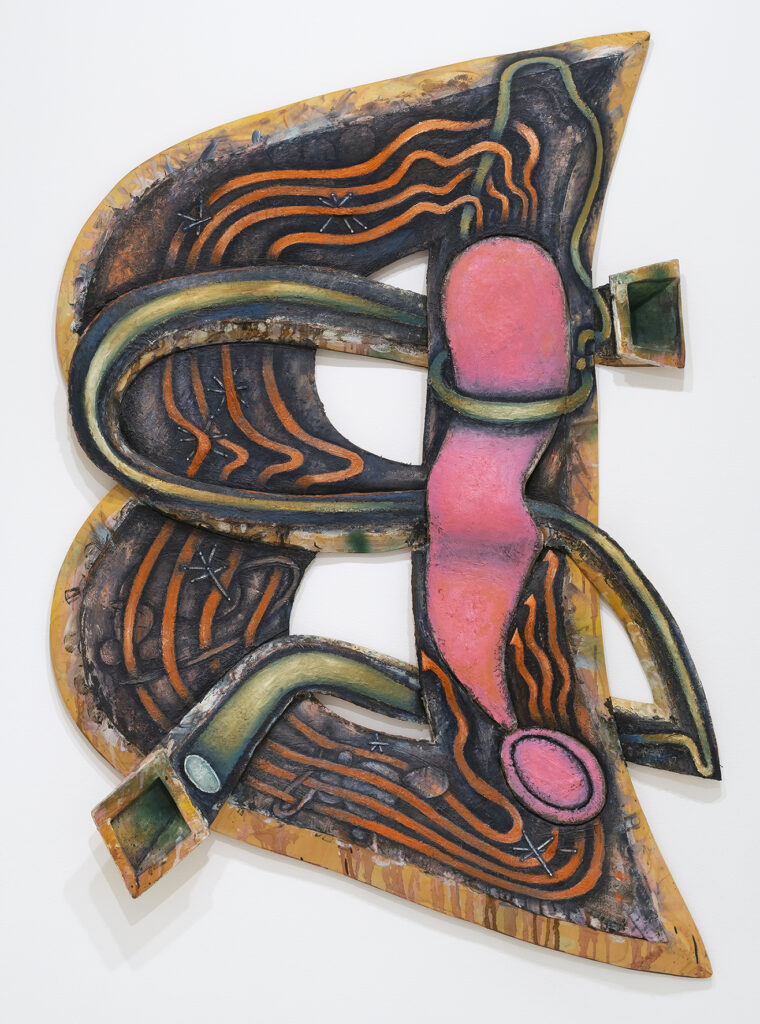
Painting after painting, it seems that Murray’s gamble paid off. She combined it all: Expressionism, Cubism, Surrealism, Abstract Expressionism, Pop-art, and Formalism, wrapped up in one painting. In a clear departure from reductive Formalist tactics on one side, and from the easy Postmodern ironies of citation and appropriation on the other, she substituted an all-inclusive approach for the formal and conceptual restrictions of both.
In hindsight, what comes through more clearly today is her constant position of independence, and even of dissidence, from post-Minimalism in the early 1970s, from the New Image movement in the late 70s, from Neo-Expressionism in the 80s and post-Modernism in the 90s.
This inspired exhibition makes clear that, with her large-format paintings, what Murray seemed to be aiming for, more than “presence,” was a power of persuasion, a kind of unexpected charismatic dimension. Something that Schnabel, for example – or Mehretu, for that matter, can only envy.
